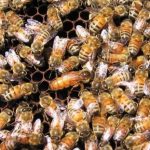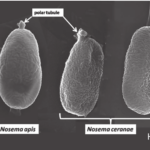
Honey Bees
Honey bees are fascinating insects that play a vital role in pollinating flowers and crops. They are social insects, living in colonies or hives that can consist of thousands of bees. The honey bee colony is made up of three types of bees: queens, drones, and workers.
The queen bee is the largest and most important member of the hive. She is the mother of all the bees in the hive and is responsible for laying eggs to ensure the colony’s survival. Drones are male bees that mate with the queen and do not participate in the day-to-day tasks of the hive. Worker bees are female bees that do all the work in the hive, including foraging for food, building and maintaining the hive, and caring for the young bees.
Honey bees are well-known for their production of honey, which they produce by collecting nectar from flowers and storing it in honeycombs. They have a special organ called a honey stomach that they use to store the nectar until they return to the hive. Once back at the hive, the worker bees deposit the nectar into the honeycombs and fan it with their wings to evaporate the excess water, turning it into honey.
Honey bees are also important pollinators, meaning they help to fertilize plants by transferring pollen from one flower to another. This process is essential for the reproduction of many plants and is necessary for the production of many fruits, vegetables, and nuts. In fact, about one-third of the food we eat relies on pollinators like honey bees.
Despite their importance, honey bees are facing numerous challenges, including habitat loss, pesticides, and diseases. It is important that we work to protect and support honey bees and other pollinators to ensure the continued health and productivity of our environment.



